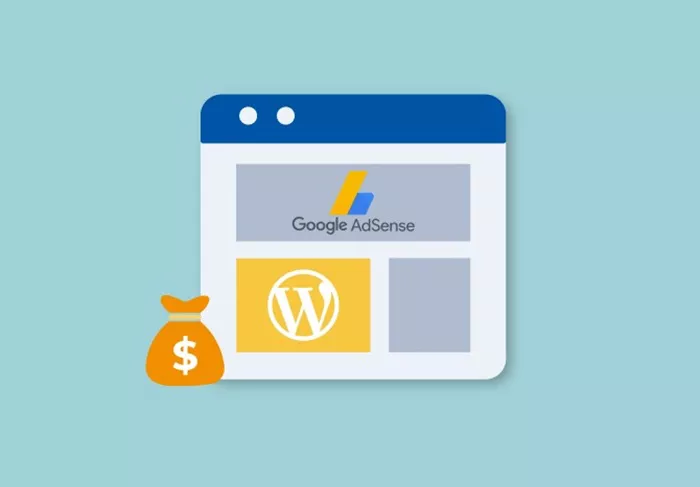Monetizing a WordPress blog is a great way to generate income while sharing valuable content. One of the most effective and widely used methods for blog monetization is Google AdSense. Google AdSense allows website owners to display advertisements on their pages and earn money when visitors interact with the ads. How to Monetize a WordPress Blog With Google AdSense? This article provides a step-by-step guide to setting up and optimizing Google AdSense for maximum earnings.
Google AdSense
Google AdSense is an advertising program by Google that enables bloggers and website owners to earn money by displaying targeted advertisements. Advertisers pay Google to display their ads, and Google shares a portion of that revenue with publishers based on user interactions, such as ad clicks and impressions.
AdSense works using an automated auction system where advertisers bid for ad placements. The ads displayed on a website are contextually relevant, ensuring a better experience for users and higher earnings for publishers.
Prerequisites for Google AdSense Approval
Before applying for Google AdSense, ensure your WordPress blog meets the following criteria:
High-Quality Content: Your blog should contain original, valuable, and well-structured content that adheres to Google’s content policies.
Domain Age and Ownership: Though Google does not specify a minimum age requirement, some regions require domains to be at least six months old.
Essential Pages: Your blog should have important pages such as About Us, Contact, Privacy Policy, and Terms of Service.
User-Friendly Design: A well-designed, responsive website with easy navigation enhances user experience and increases the chances of approval.
Organic Traffic: While there is no official traffic requirement, a steady flow of organic visitors improves approval chances.
Once these prerequisites are met, you can proceed with the application process.
How to Apply for Google AdSense
Sign Up for Google AdSense: Visit the Google AdSense website and sign up using a Google account. Enter your blog’s URL and complete the required information.
Add AdSense Code to Your Blog: After signing up, Google provides an HTML code snippet that needs to be placed on your blog. This allows Google to verify ownership and assess the site for compliance.
Wait for Approval: Google typically takes a few days to review applications, though it can take up to two weeks. If approved, you will receive an email confirmation.
Start Displaying Ads: Once approved, you can configure ad placements and start earning revenue.
Optimizing Ad Placements for Higher Revenue
Ad placement is crucial for maximizing earnings. Here are some best practices:
Above-the-Fold Ads: Place ads where they are immediately visible without scrolling, such as in the header or below the navigation bar.
In-Content Ads: Embedding ads within content enhances visibility and engagement.
Sidebar and Footer Ads: While these areas generate lower engagement than in-content ads, they can still contribute to overall revenue.
Mobile Optimization: Ensure that ads are optimized for mobile users to improve user experience and ad performance.
Experiment and Analyze: Use Google AdSense reports and A/B testing to determine the best-performing ad formats and placements.
Types of Google AdSense Ads
Google AdSense offers different ad formats to suit various content types and layouts:
Display Ads: These include banners, rectangles, and skyscrapers, available in different sizes.
In-Feed Ads: Blended within content feeds to offer a non-intrusive user experience.
In-Article Ads: Appearing within articles to maintain content flow.
Matched Content Ads: Recommended articles from your site, increasing page views while generating revenue.
Auto Ads: Google automatically places ads in optimal locations based on user behavior and site structure.
Choosing the right ad format enhances user engagement and increases earnings.
Compliance With Google AdSense Policies
To maintain an active AdSense account, adhere to Google’s policies:
No Click Fraud: Do not click on your own ads or encourage users to do so.
No Prohibited Content: Avoid content related to adult material, illegal activities, copyrighted materials, or misleading information.
User Experience: Ensure ads do not interfere with content accessibility or negatively impact website navigation.
Ad Balance: Avoid excessive ad placements that may lead to penalties or account suspension.
Regularly reviewing Google’s policies helps prevent violations and account suspensions.
Maximizing AdSense Earnings
Increase Traffic: More visitors translate to higher earnings. Implement SEO strategies, social media marketing, and quality content to attract more users.
Improve Ad Click-Through Rate (CTR): Experiment with ad placements, colors, and formats to boost CTR.
Use High-Performing Keywords: Content with high CPC (cost-per-click) keywords generates more revenue.
Monitor Performance: Use Google Analytics and AdSense reports to track and optimize performance.
Diversify Income Sources: Combine AdSense with affiliate marketing and sponsored content for additional revenue.
Troubleshooting Common AdSense Issues
Low Revenue: Optimize ad placements, increase traffic, and target high-paying niches.
Account Suspended or Banned: Follow AdSense policies strictly to avoid suspensions.
Ads Not Showing: Ensure ad codes are correctly implemented, check for policy violations, and verify that your site is indexed.
Conclusion
Google AdSense is a powerful monetization tool for WordPress blogs. By following the right strategies—creating quality content, optimizing ad placements, adhering to policies, and increasing traffic—you can maximize your earnings. Continuously analyze performance and experiment with different approaches to enhance your blog’s revenue potential. With patience and consistency, AdSense can become a reliable income stream for your website.
Related Topics
- How to Promote a Blog on Social Media?
- How to Create a Blog Title?
- How to Create a Profitable Guest Blog Strategy?

